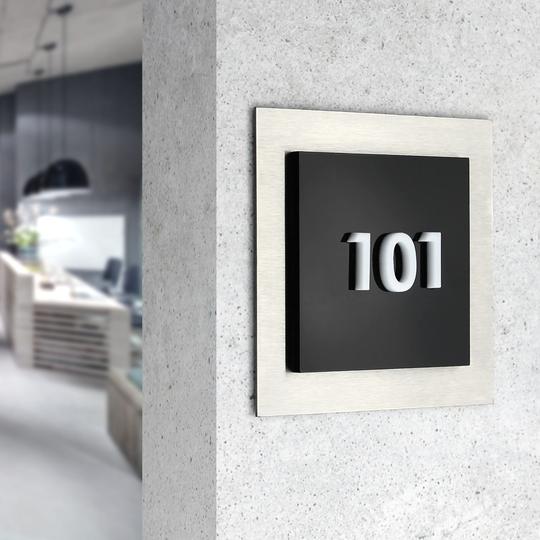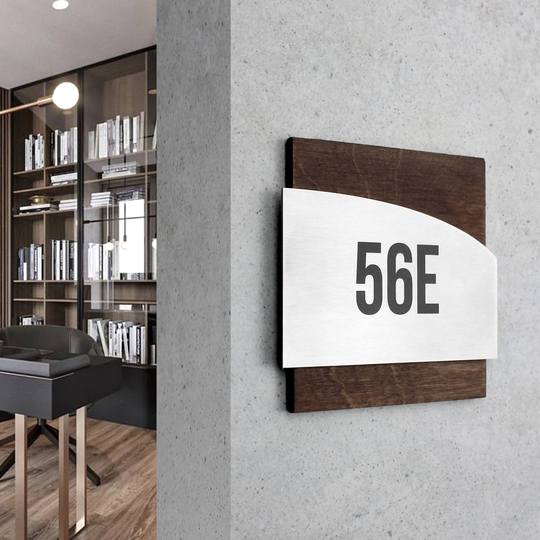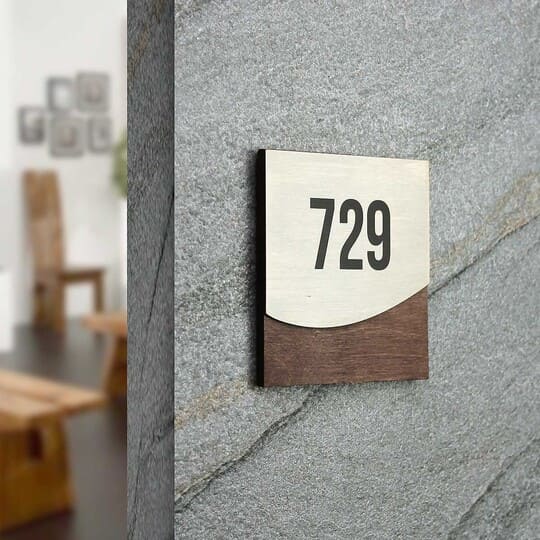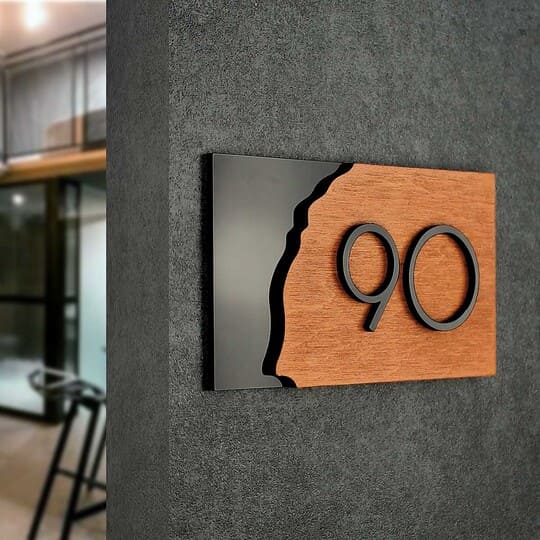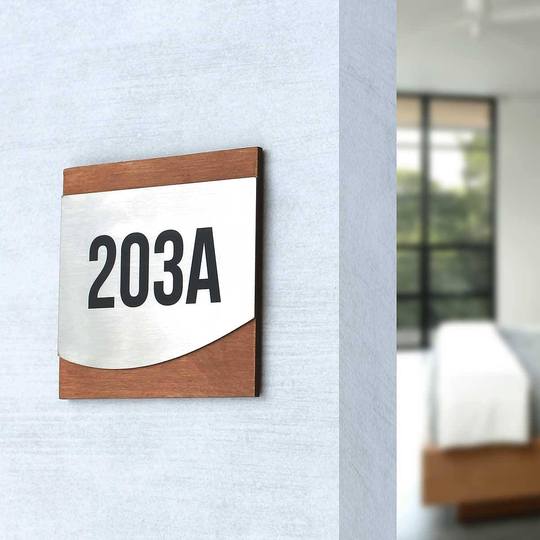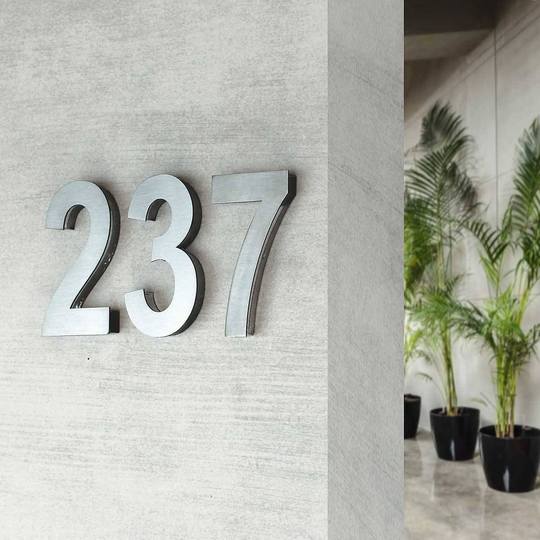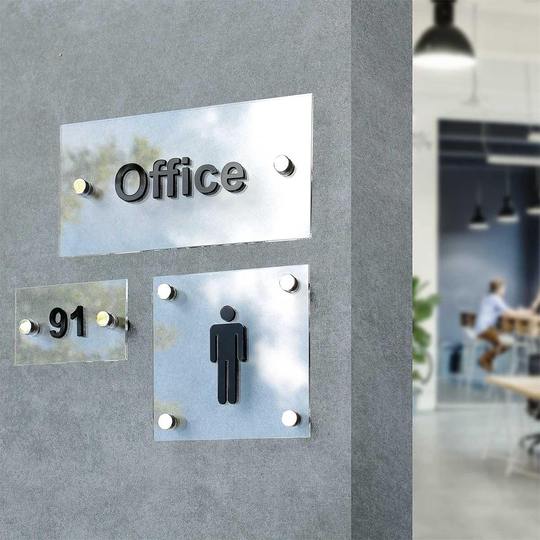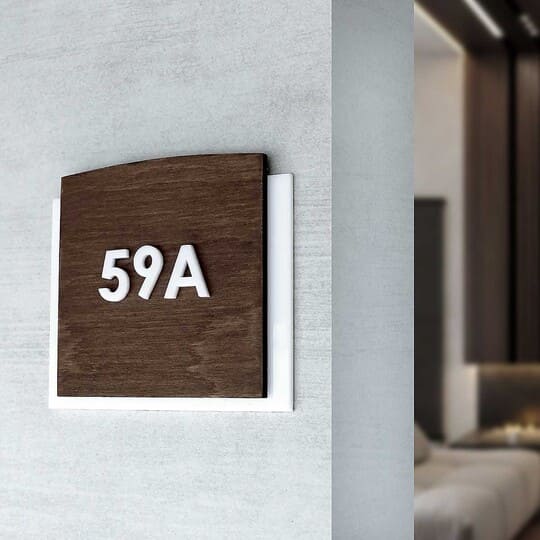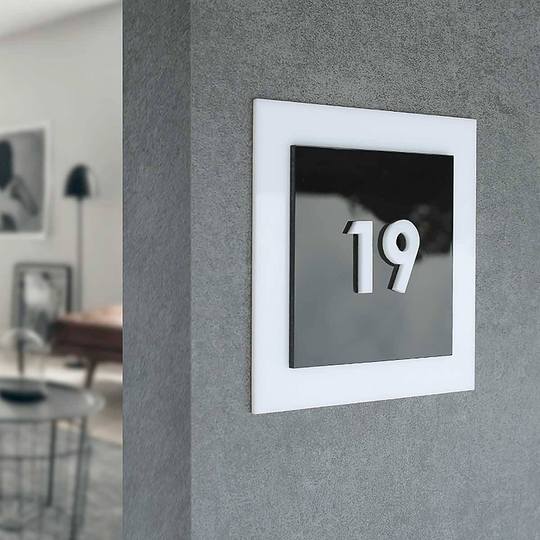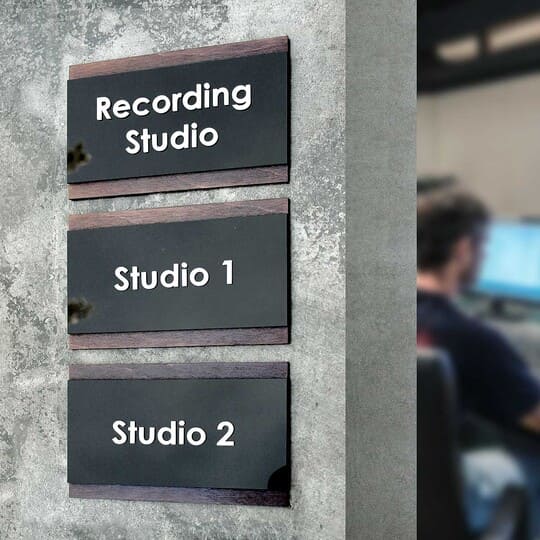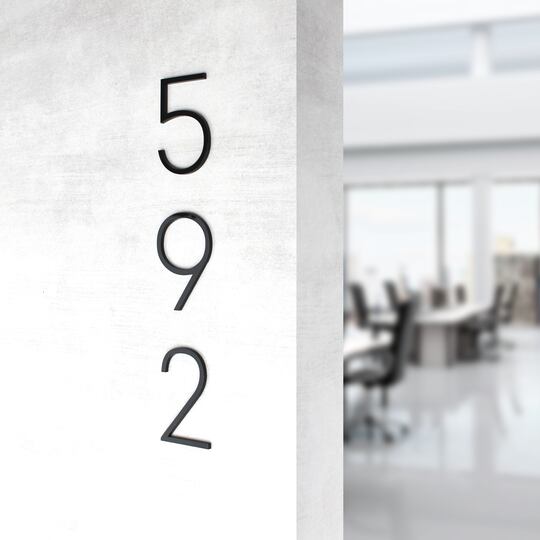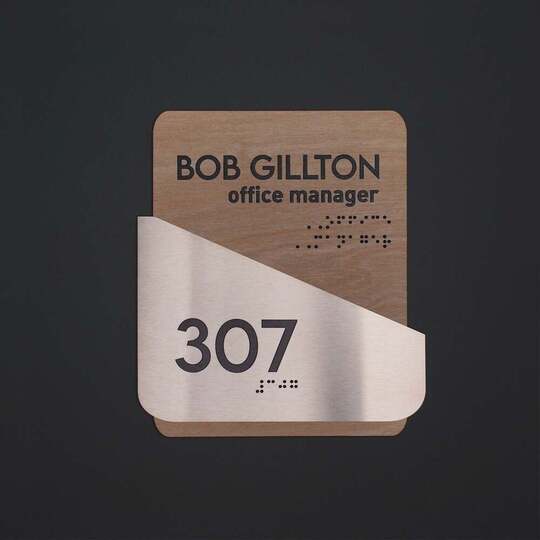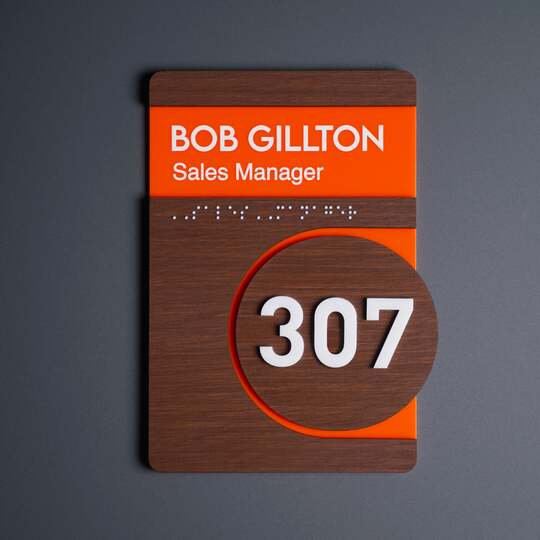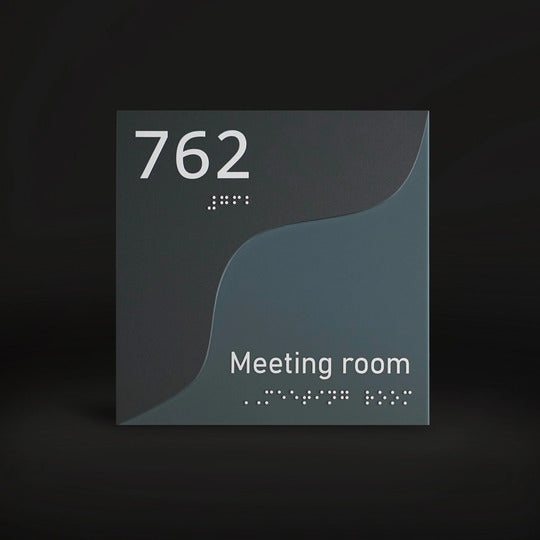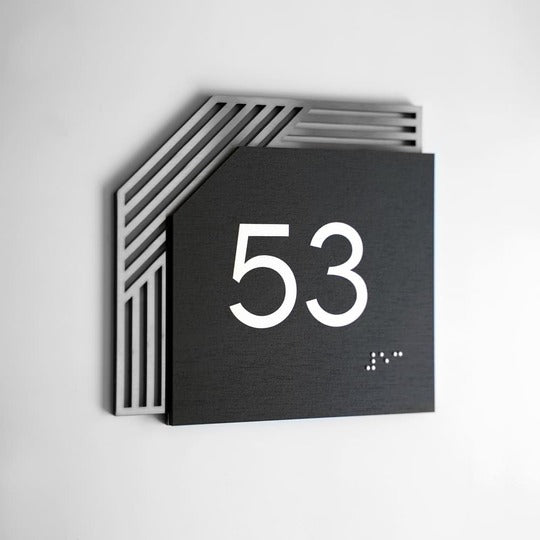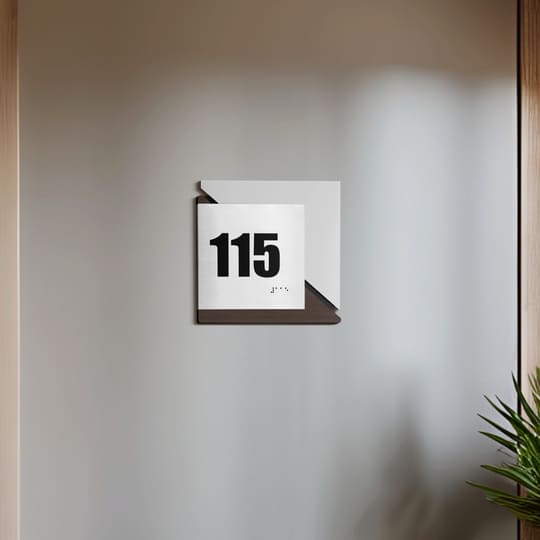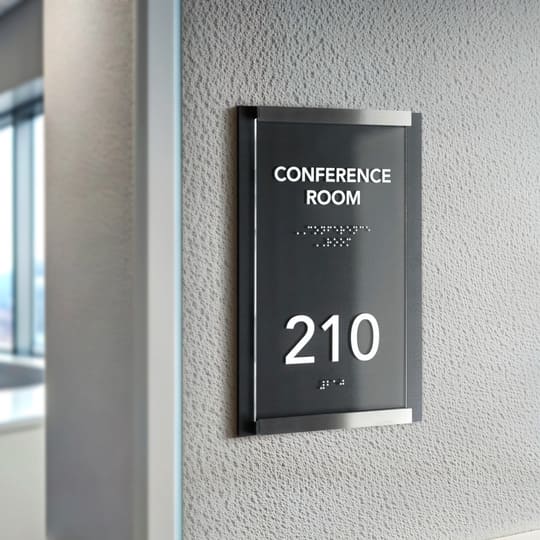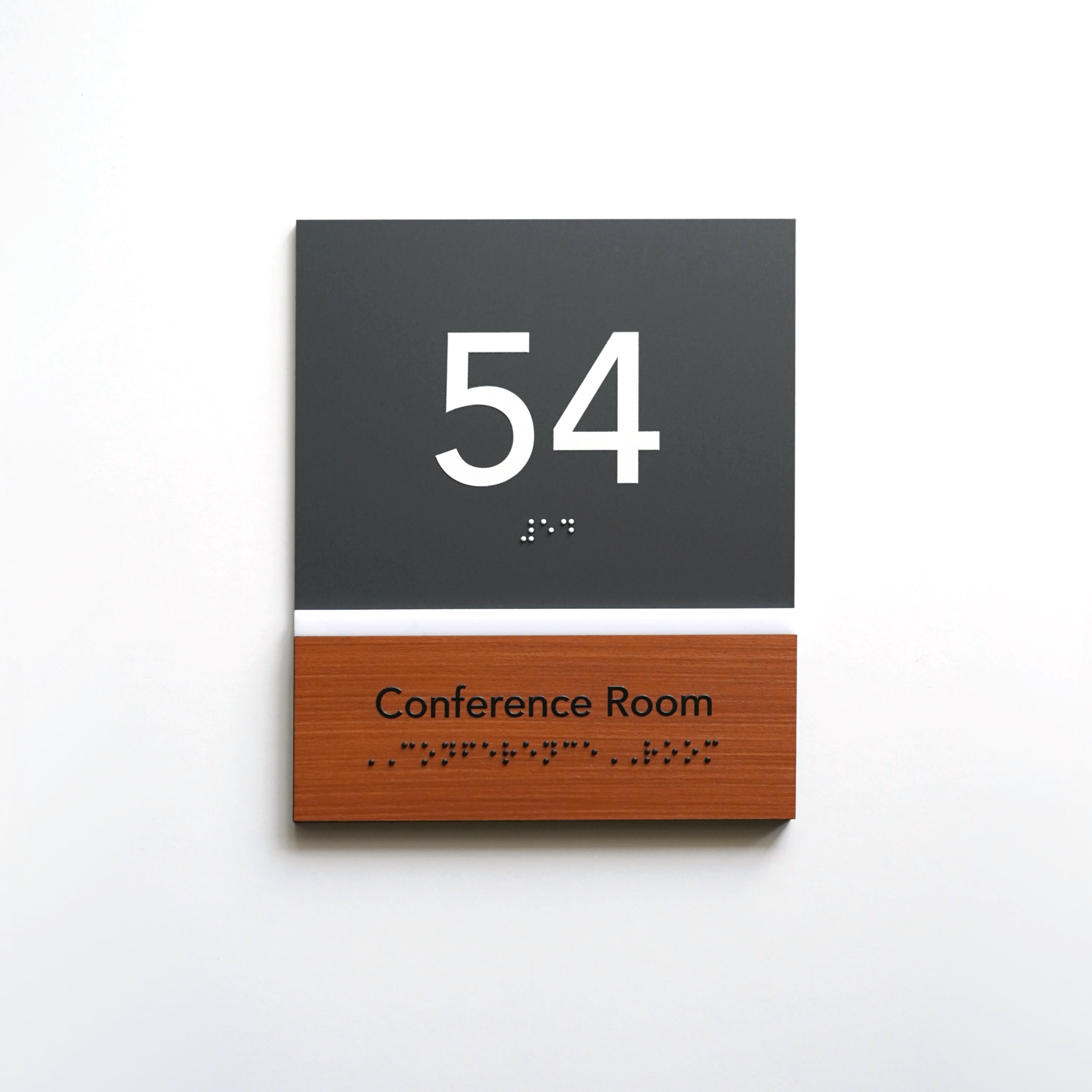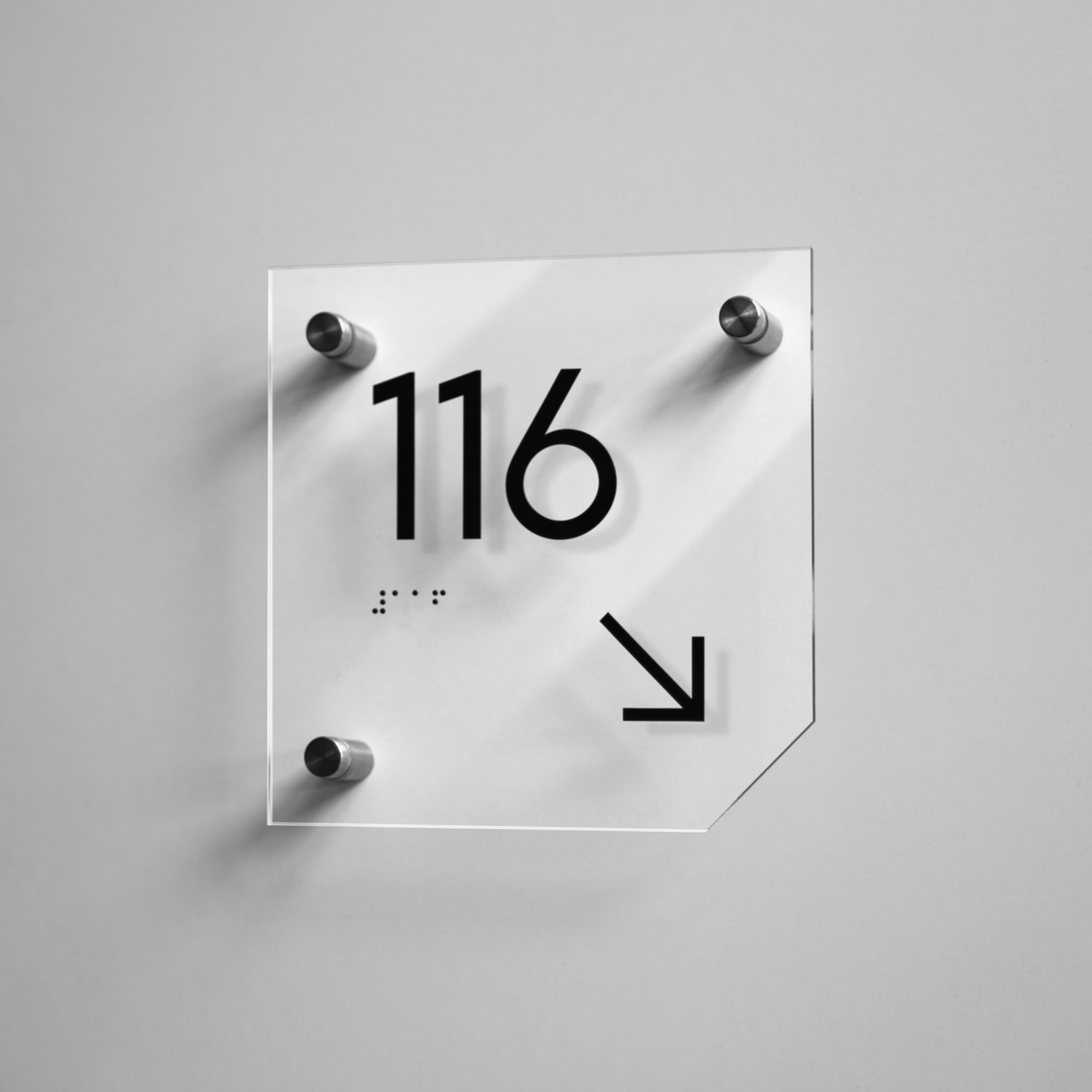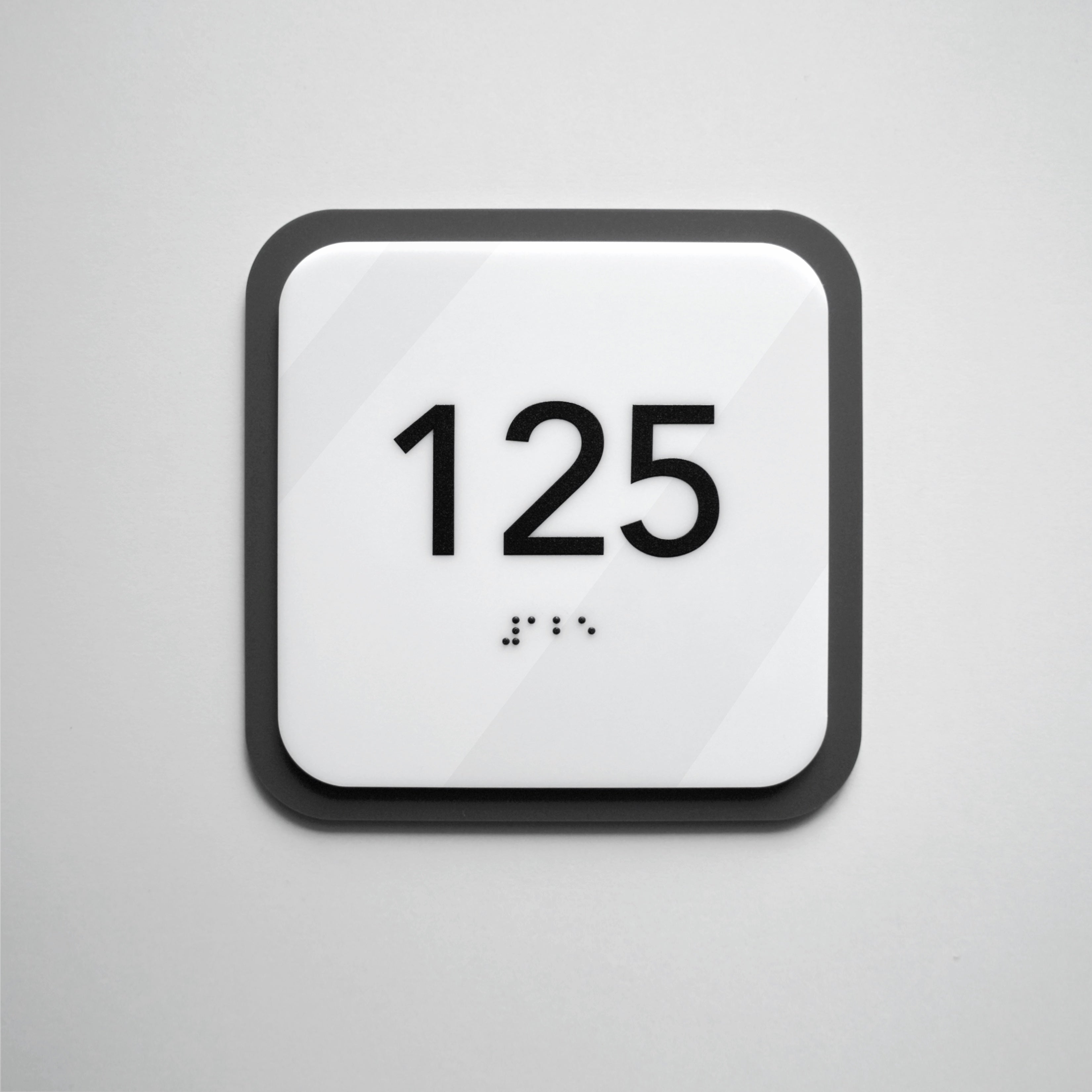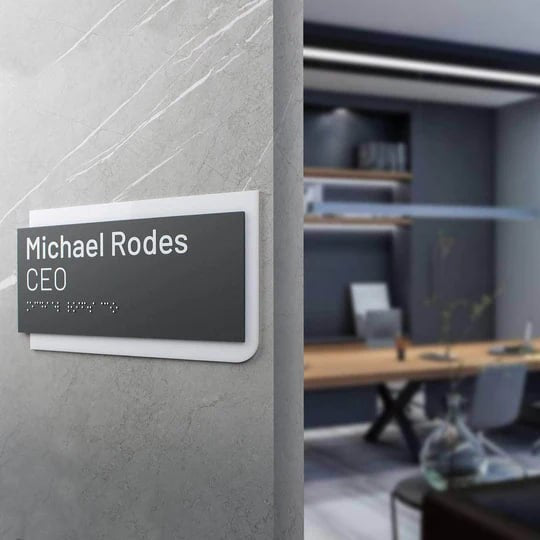
Guide to the apartment complex signs: functionality and style in every detail
A residential complex isn’t just a place to live — it’s a thoughtfully designed space where every detail matters. In the world of modern housing, where nothing is truly insignificant, specifically signs for residential complexes have evolved from mere wayfinding tools into markers of quality, style, and attention to detail.
From the entrance to the elevator lobby, everything must be cohesive, clear, and visually appealing. Thoughtfully designed signage leaves a lasting impression, shapes a unique identity, and often serves as a very first interaction with the space. These signs don’t just assist with navigation — they underscore the complex’s concept, status, and level while showcasing care for its residents.
So, which signs are mandatory, and which ones add a stylish touch? How can you create a unified visual code that makes your complex stand out from others? In this article, we break down all the key points and offer a practical guide on how to get it right.
Why are modern apartment signs needed for residential complexes?
Functionality
In a contemporary residential complex, signs are not just elements of the guiding residents — they are a fully integrated navigation system that provides convenience for guests and service personnel. These signs efficiently guide people to key locations such as apartments, elevators, utility rooms, and common areas. Clear signs with the right fonts and placement minimize the risk of confusion and ensure smooth navigation, even in complex layouts.
It’s especially important that room numbers and other indicators are designed with accessibility in mind for people of all ages. Contrast, bright colors, and logical placement matter. This kind of functional clarity not only creates convenience but also positively impacts the entire experience of being in the building.

Image and status
Premium interior signs are a vital visual accent. They add a sense of completeness, style, and even sophistication to a space. High-quality signage transforms otherwise functional elements into integral parts of the design that harmonize with the overall interior concept, enhancing the overall appearance of the complex.
These details collectively create aesthetic appeal and demonstrate the developer’s commitment to quality. Material selection here also plays a key role — stainless steel or acrylic signs, for example, significantly emphasize the modernity and quality of the object, far surpassing the impression left by plastic alternatives. Thoughtful signage design reinforces the branding of the residential complex, its concept, and positioning while communicating care, professionalism, and attention to detail. Visually appealing interior elements build trust in the developer.
Legal and safety aspects
Beyond aesthetics and convenience, signs fulfill important legal obligations. Many safety signs are mandatory under local regulations. This includes elements like evacuation signs, entrance/exit signs, and building directory signs, all of which must be installed in legally designated areas.
These markings provide essential information for residents and visitors alike, ensuring quick orientation in case of emergencies. To ensure these signs meet regulatory requirements while maintaining visual harmony, it is worth using the right materials — durable, reliable, and at the same time visually attractive.

Types of signs: what does a residential complex really need?
Apartment unit number signs
This is a foundational element of every residential property. Apartment unit number signs should be crafted in a style unified with the cohesive design of the complex. They must not only be clear and noticeable but also blend harmoniously with the interior. This is especially crucial for premium projects, where even door numbers contribute to the broader concept.
To create high-quality, long-lasting solutions, only durable materials for signs are used: acrylic, stainless steel, and wood. Each of these materials has its own advantages — for example, wood adds warmth, acrylic allows you to make details in color, and steel emphasizes modernity and minimalism.
Mounting methods: contemporary high-quality signs eliminate the need for dowels or visible fixtures. Instead, they are secured using double-sided adhesive tape or metal spacers that create a "floating" effect on the wall. This approach is neat, modern, and preserves the cleanliness of the space.

Restroom and utility room signs
Intuitiveness of perception is important here. Restroom signs should be concise and instantly recognizable, featuring pictograms that are clear and universally understood. Using contrasting colors, well-thought-out shapes, and precise pictograms minimizes mistakes and simplifies navigation in the building for everyone, including foreigners and people with special needs. Minimalism equals efficiency, especially in functional areas.
Directional signs for residential complexes
These elements include elevator signs, floor number markers, and entry / exit signs. They are the basis for easy navigation between floors, sections and areas. All these signs should be legible, even from a distance, achieved through the use of white backgrounds, sharp contours, appropriate fonts, and bright colors for emphasis.
Additionally, these signs must withstand daily use, resist fading, and maintain their shape. Choosing materials that meet high operational standards is therefore vital for this category.

Information signs
This category includes building directory signs, evacuation routes, usage rules for shared spaces, restricted access notices, etc. These elements should contain easily readable critical information while maintaining the building's overall style.
These apartment building interior signs often serve dual purposes — not only functional but also as branding elements. They may contain a logo, brand color scheme or other visual accents that emphasize the unique identity of the complex.

Comprehensive design: unified visual solutions
In any residential building, it’s important to maintain consistency across all signage — from lobby signs to entrance plaques and even outdoor signs that greet residents and guests as they approach the building. A lack of stylistic unity creates visual noise, while unified design solutions cultivate a sense of completeness, aesthetics and attention to detail. Modern solutions from Bsign are an example of such an approach: sustainable signage materials, modularity, adaptive design, and strict adherence to the branding of the residential complex.
Uniformity in color, font style, and material creates a cohesive look that underscores the developer’s professionalism, care for brand reputation, and concern for residents’ comfort. This kind of design integrity not only aids in navigation but also fosters an emotional connection to the space.
Example: wooden door numbers with acrylic raised digits, stainless steel hallway signs, and acrylic plaques for utility areas — all thoughtfully designed to create a welcoming environment from the first moments in the building. They integrate seamlessly into the space, reinforcing its identity and elevating the overall impression.
When all signs are part of a single system, maintenance and future updating become much simpler — an essential aspect for property managers in large residential complexes.

How to сhoose high-quality signs for residential complexes: durable materials for long-lasting use
Avoid plastic
Plastic signs are a short-term solution — they look cheap and quickly lose their appeal. They fail to ensure long-term success and can diminish the overall experience for residents.
Choose instead:
- Stainless steel signs — durable, resistant to moisture and mechanical impact.
- Acrylic signs — lightweight, modern, provide an opportunity to make bright details (such as raised lettering).
- Wooden signs — add warmth, depth, emphasize the unique identity of the complex.
All these durable materials are the perfect solution for creating signage that will remain stylish for years to come.

Proper sign placement: the key to convenience
Signage placement should be logical: no higher than eye level, away from distractions, and in well-lit areas. It is important to consider not only aesthetics, but also enhanced visibility and functional purposes.
High-quality signs — an investment in reputation
For property managers, it’s crucial to understand that every detail, even such a seemingly insignificant one as a door plaque or hallway sign, affects the reputation of the project. In the field of real estate, details matter, and high-quality signs are more than just décor; they serve as a visual testament to meticulous planning, resident comfort, and a developer’s thoughtful approach.
Well-crafted signage signals that the developer did not cut corners on essential details but instead invested in the overall appearance and functionality of the building. This contributes to a lasting impression of the residential complex — an impression that endures long after the first visit.
These are design elements that will be noticed, appreciated and, most importantly, remembered. This approach not only boosts resident's satisfaction but also fosters positive perceptions among potential buyers, partners, and investors. That’s why signs are not merely expenses — they are an investment in the long-term success of the brand recognition and the property.

Checklist for residential complex managers and developers:
Planning to install or update signs in your residential complex? Use this checklist as a guide to create a functional, modern, and stylish space:
-
Clear navigation:
All key locations (apartments, elevators, exits, service rooms) must be easily identifiable with well-placed apartment directional signs.
-
Consistency in style:
Do the design, fonts, colors, and materials follow a unified theme across the entire complex? This is essential for a polished, cohesive appearance.
-
Premium materials:
Have you chosen durable materials for signs (stainless steel, acrylic, wood)? Avoid plastic, which deteriorates quickly and diminishes the overall aesthetic.
-
Legibility and accessibility:
Are informational signs readable from different distances? Have you considered the needs of the elderly, foreigners and people with disabilities?
-
Legal compliance:
Ensure all mandatory safety signs are properly installed, including building plans, entry / exit signs, and emergency evacuation markers, in accordance with current regulations.
-
Residential branding:
Are logo, brand colors and other elements of the visual identity of the complex integrated into the lobby signs and other areas?
-
Smart placement:
Are the signs installed at optimal heights, in well-lit areas, free of obstructions? This affects convenience and aesthetics.
-
Maintenance and updates:
Will the signs be easy to update if needed? Unified design solutions simplify future modifications and replacements.
-
Visitor experience:
Do the signs create a positive first impression and highlight the status of the complex while conveying important information?

Conclusions
High-quality, stylish, modern signs for residential complexes are not just navigation. They are a visual reflection of the level of the project, its attention to detail and concern for the comfort of residents. By choosing custom apartment signs for the residential complex, you are investing in the community's identity and shaping a space that truly works.
Planning to update or redesign your signage? Get in touch for a consultation — we’ll help you select the perfect solutions to highlight the status of your complex and meet the highest design and durability standards.
